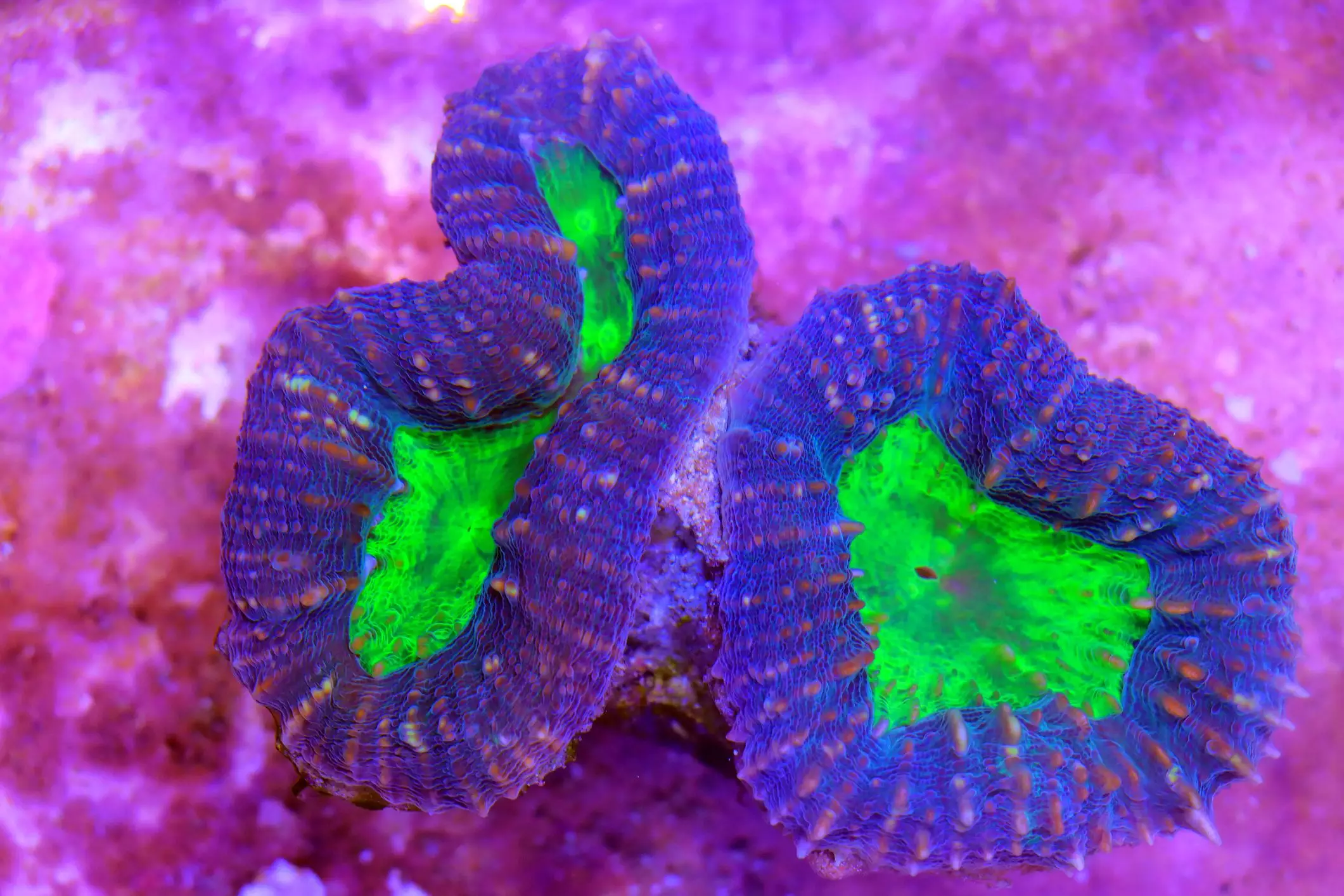Mushroom corals have become a preferred choice among novice reef keepers due to their resilience and diverse beauty. Their ability to adapt to various aquarium conditions while maintaining striking appearances make them an ideal addition for those just stepping into the marine aquarium hobby. However, while they may present an inviting opportunity, it is crucial to understand their specific growing needs, potential space requirements, and interactions with other corals in the tank environment.
Mushroom corals, technically classified as colony polyps, are available in a plethora of vibrant colors, which can vary from bright greens to unique luminescent blues when illuminated under specialized lighting such as blue LEDs. Often sold in clusters attached to rocks or plugs, these corals can grow rapidly, which can pose challenges in more tightly packed aquarium settings. Their quick growth rate can lead them to encroach upon slower-growing species, necessitating a well-planned layout to prevent overtaking.
Additionally, while many varieties are relatively docile and easy to care for, certain species have the capability to deliver mild stings to neighboring corals. Therefore, providing ample space around them is paramount to maintain harmony within the tank ecosystem.
Among the most commonly recommended species for beginners are Green Star Polyps and Anthelia. Known colloquially as “indestructible,” Green Star Polyps grow in small clusters and display long, waving tentacles that create a mesmerizing movement in the aquarium.
Anthelia, often referred to as Thin Waving Hand Coral, along with its thicker counterpart, Xenia (Thick Waving Hand Coral), offers another option well-suited for novice aquarists. While both species share similar care needs and aesthetic appeals, Xenia is characterized by its more substantial, thicker tendrils. Their dynamic motion enhances the visual presence of the aquarium and fosters a lively environment.
Another fascinating addition is the Pineapple Coral, which may not visually resemble its namesake but provides a unique vertical element to aquarium decor. These corals not only thrive in various conditions but also contribute significantly to the biodiversity of a marine ecosystem.
Colt corals, often dubbed as finger leather corals due to their delicate projections that look like fingers, exhibit resilience and adaptability. Their light tan bodies paired with brown polyps can bring subtle elegance to an aquarium, but it is essential to note that their structures can be fragile. Avoiding overcrowding and providing room for movement is crucial to their longevity.
Toadstool Mushroom Corals are another multifaceted choice, presenting numerous color variations and a unique growth structure consisting of a thick stalk and a base plate with polyps extending from the top. However, potential toxin production can lead to irritation among neighboring species, so spatial planning is highly recommended.
Bubble Coral showcases a distinct aesthetic with its rounded, bubble-shaped polyps, which can take on various colors throughout the day. This coral prefers calm waters and can exhibit aggressive behavior towards surrounding species, further emphasizing the need for cautious placement and selection.
Corals inherently have specific environmental preferences that dictate their health and growth. Closed Brain Coral, although less commonly seen as large spherical formations in captivity, grows in patches and appreciates moderate water flow and lighting conditions. Without optimal resources, their growth can be limited. Similarly, Lobed Brain Coral presents a user-friendly option, coupling a wide range of colors with relatively straightforward care, yet they also have distinct preferences regarding light levels and water flow.
Moreover, when integrating jasmine polyps, which boast eight tentacles and various colors from browns to pinks, it is essential to ensure they are afforded the right conditions in terms of light and water dynamics. Their delicate nature makes them susceptible to damage, highlighting the need for a careful approach in tank maintenance.
Before introducing coral species into your aquarium, conducting thorough research is indispensable. Understanding the specific needs and requirements of each species will lead to more successful and sustainable marine ecosystems. Additionally, maintaining proper water quality, trace minerals, and suitable feeding schedules ensures the well-being of these captivating living entities.
Ultimately, for those new to reef keeping, starting with the more manageable species mentioned is advisable. As confidence and experience build, aquarists can explore more complex coral varieties, continually enriching their vibrant underwater worlds.


Leave a Reply